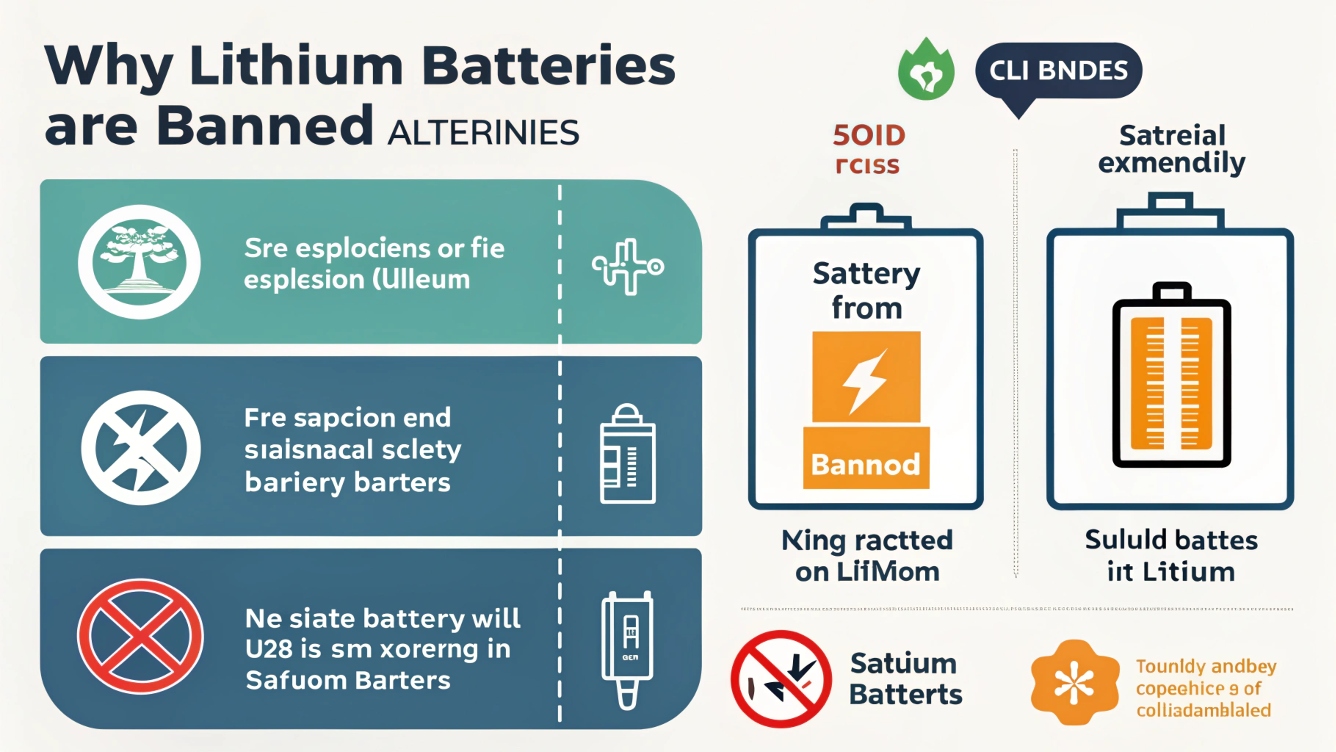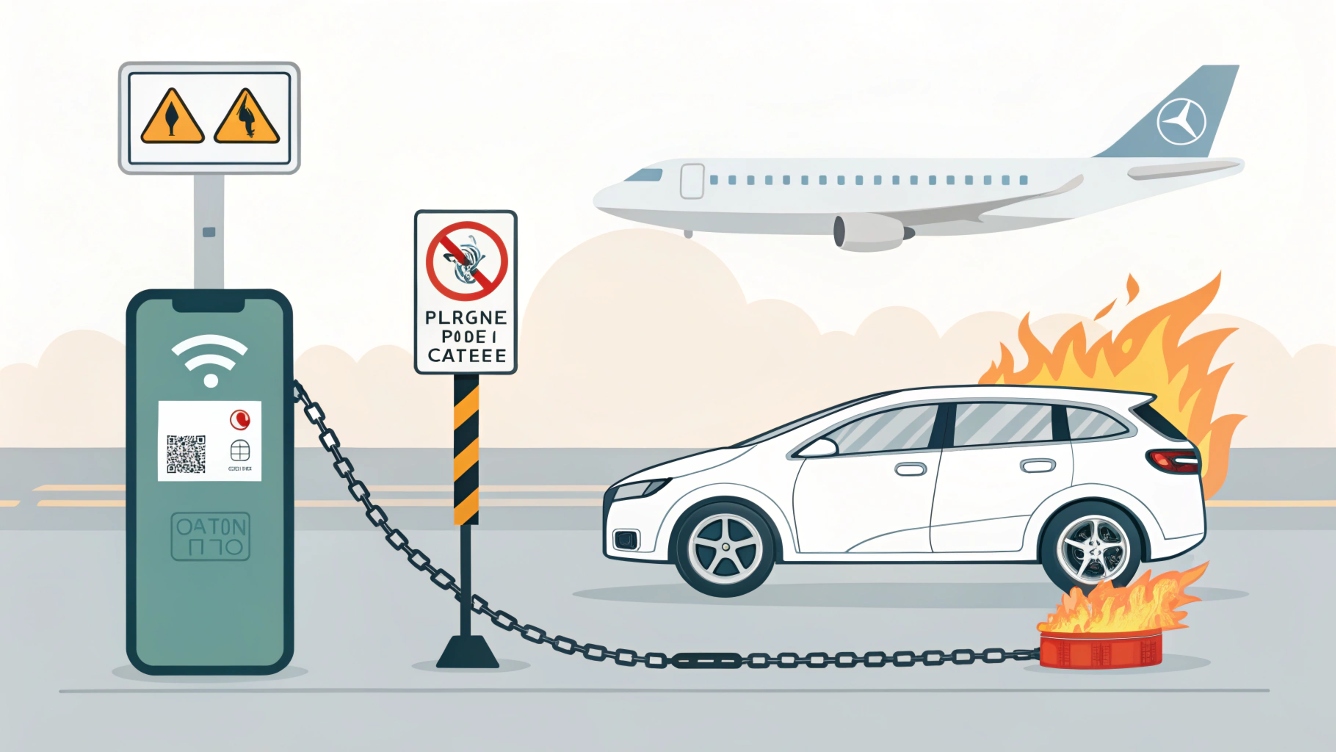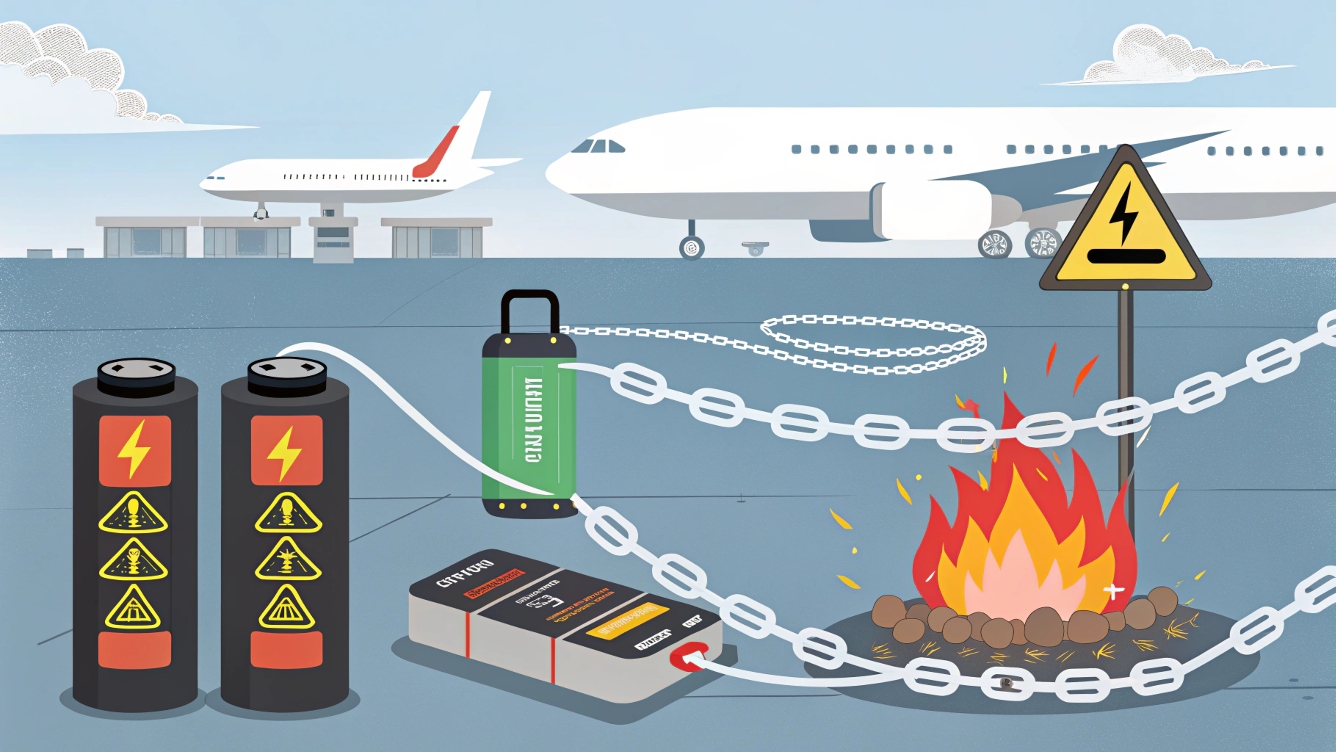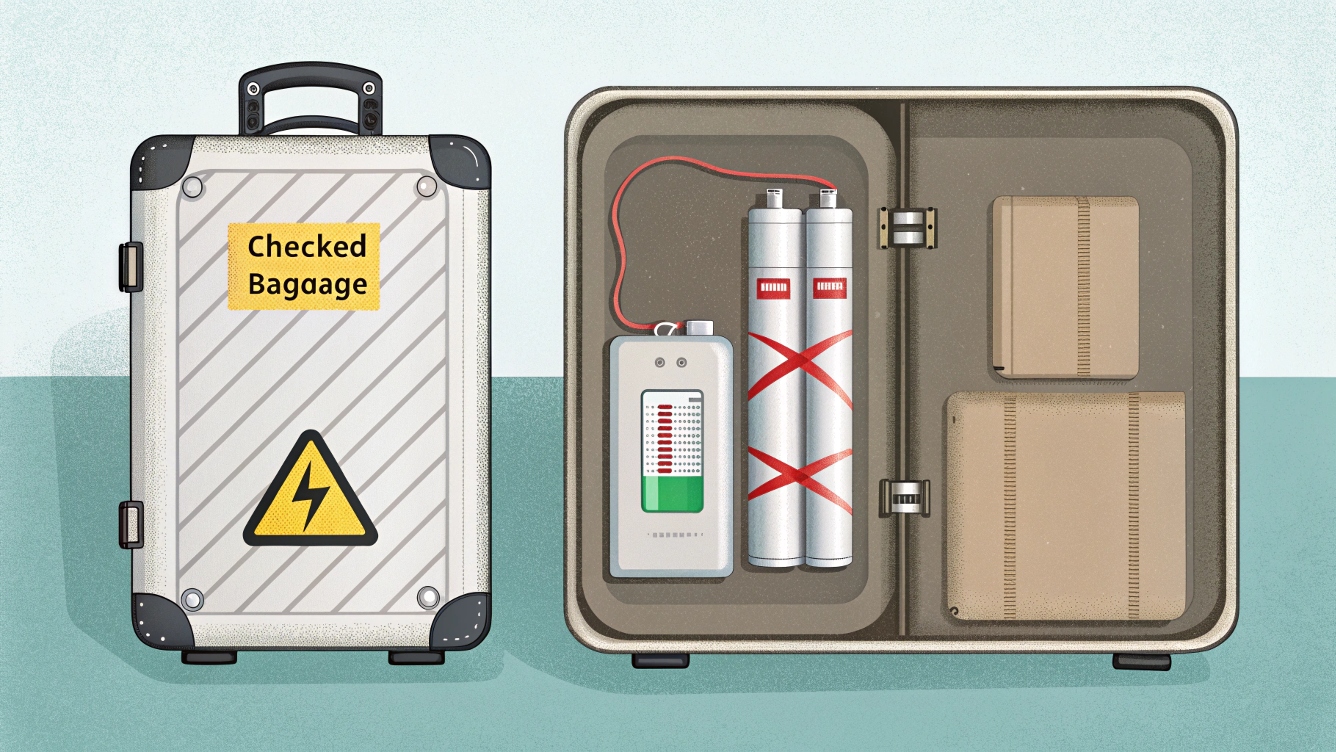Perché sono vietate le batterie al litio? Rischi per la sicurezza e alternative sostenibili
The Fire Hazard Behind Lithium Battery Bans
Lithium batteries power everything from smartphones to electric vehicles, but their risks in transit—especially on airplanes—have led to strict regulations. The core issue? Fuga termica, a chain reaction where overheating triggers fires or explosions. Here’s why airlines are cracking down:citare[1]:citare[6]:
- Flammable Electrolytes: Lithium-ion batteries use liquid electrolytes that ignite easily under stress.
- Pressure Build-Up: Damaged cells release gases, causing swelling and potential rupture.
- Cascade Failures: A single faulty battery can ignite neighboring cells, as seen in cargo plane incidents.

In 2025, IATA’s updated Dangerous Goods Regulations (DGR 66th Edition) mandated lithium batteries in transport to be at ≤30% charge to reduce fire risks:citare[1]:citare[7].
Lithium Battery Restrictions: What’s Banned and Why
Airline-Specific Rules
- Checked Luggage: Most airlines prohibit loose lithium batteries >100Wh in checked bags due to unsupervised fire risks:citare[2].
- Power Banks: Restricted to 27,000mAh (99.9Wh) on flights; larger units require airline approval:citare[3].
Damaged Batteries: Swollen or leaking batteries are universally banned from flights.

Safer Tipi di batteria Technologies Emerging
1. Batterie a stato solido
Replacing liquid electrolytes with solid polymers, these batteries eliminate fire risks and offer 2x energy density. Toyota plans to commercialize them by 2027:citare[2].
2. Batterie agli ioni di sodio
Sodium’s abundance and stability make it a lithium alternative. New UN codes (PER ESEMPIO., UN 3551) classify sodium-ion packs for safer air transport:citare[7].
3. Sistemi di batterie modulari
Nostro Modular Energy Storage Kits let users split large batteries into smaller, compliant units. Per esempio:
- 10kWh system → Four 2.5kWh modules (ogni <100Wh, airline-safe).
How to Comply with 2025 Lithium Transport Rules
For Consumers
- Charge Limits: Keep batteries ≤30% charge before flights:citare[6].
- Protective Packaging: Use UN-certified boxes with 3-meter stack testing (mandatory for commercial shipments):citare[7].
For Businesses
- Label Updates: Replace “Lithium Battery” labels with “Battery” tags showing UN numbers (PER ESEMPIO., UN 3556 for lithium-powered vehicles):citare[7].
- Documentazione: Obtain carrier approval for high-capacity batteries (>100Wh) post-2025:citare[1].
Solar Solutions: Reducing Dependency on Risky Batteries
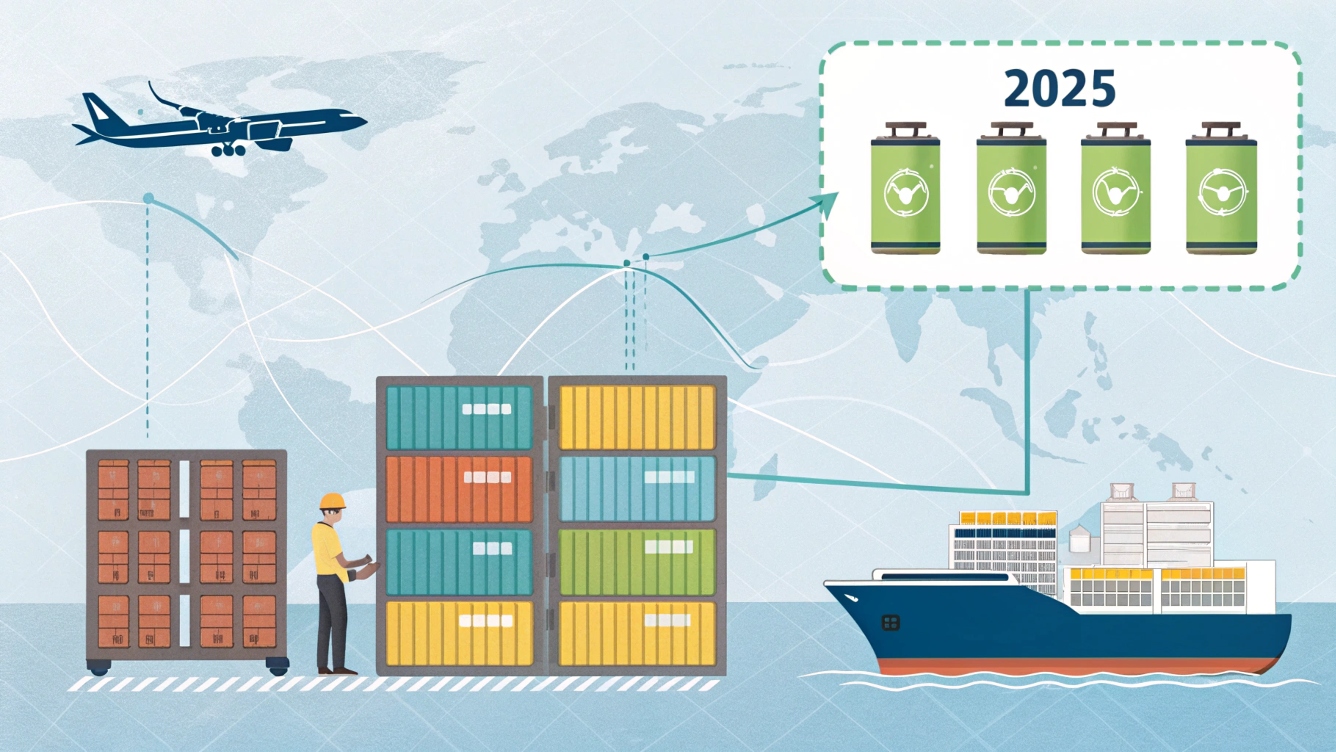
Pairing solar panels with solar-compatible battery packs (come il nostro Off-Grid Solar Kits) minimizes lithium reliance:
- Daytime Charging: Solar energy directly powers devices, reducing battery cycles.
- Hybrid Systems: Use lithium for short-term storage and flow batteries for long-duration needs.
Argomento di studio: A cabin owner cut lithium use by 60% by adding a 5kW solar array + 2 sodium-ion backup units.
Il futuro dello stoccaggio energetico: Beyond Lithium
| Tecnologia | Sicurezza | Densità di energia | Costo ($/kWh) | Miglior caso d'uso |
|---|---|---|---|---|
| Ioni di litio | Moderare | 150–250 WH/KG | 90–130 | Elettronica di consumo |
| Stato solido | Alto | 300–500 Wh/kg | 150–200 | Veicoli elettrici, Aviation |
| Ioni di sodio | Alto | 120–160 Wh/kg | 70–100 | Stoccaggio della griglia |
| Batterie a flusso | Molto alto | 15–25 Wh/kg | 300–500 | Solar Farms |
Data sourced from industry reports and Wikipedia: Batteria agli ioni di litio.
Conclusione: Embrace Safer Tipi di batteria for a Secure Future

While lithium bans aim to prevent disasters, innovations like solid-state and modular systems offer safer alternatives. Presso GYCX Solar, we prioritize technologies that balance power and safety—whether you’re flying with gadgets or powering a home.
Passi successivi:
- Explore our Fireproof Battery Cases for compliant travel.
- Design a hybrid system with our Solare + Storage Kits.
- Guarda il nostro Safety Tutorials to master battery handling.
Riferimenti
- Lithium fire risks: Wikipedia: Batteria agli ioni di litio.
- IATA regulations: Derived from 2025 DGR 66th Edition guidelines.

